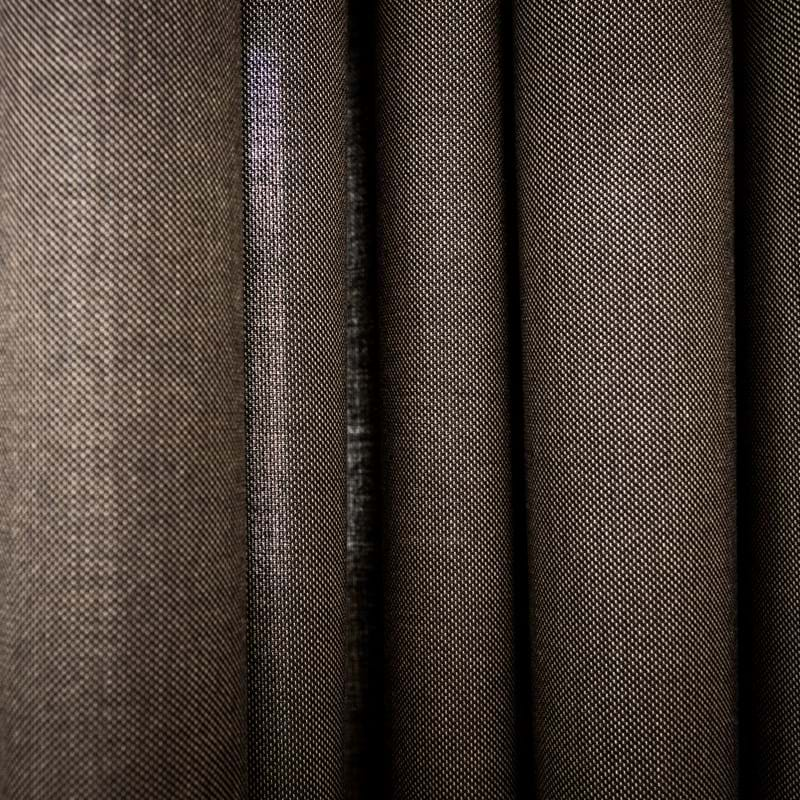What shapes an acoustic environment and what is the role of visual elements? To get a design perspective on this question, we spoke to the Design team at Svensson.
Designing Sounds / A distinct idea of the environment to be created
We do not see the acoustic environment as something separate, but part of a holistic approach. You don't go into an acoustic environment, you go into a room. So ask yourself, what is the purpose of the room, who will use the space and what are the requirements for the acoustic environment?
In order to create a pleasant atmosphere in the room, with a good acoustic environment at the centre, we like to mix heavier but also more transparent qualities.
Heavier qualities are often preferable from the point of view of absorbing sounds that are perceived as disturbing to the users of the space. But with a mix of heavier and more transparent textiles, the interior is experienced as more open, airy and with a good overview of the ongoing activities in the space.
In addition to hanging textiles, the space's furniture also plays an important role. There are endless possibilities to use textile-covered furniture to create an interior that has a great impact on the room's acoustic environment. With both hanging and upholstered shapes, it creates an inviting interior where people feel comfortable.
Zones with a purpose
Cramped or spacious, small or large? We think what is crucial, however, is to look at the existing need or the need that is to be created. To ask the question, what do we want this space to offer users? Once the need is defined, to then look at it in terms of zones rather than rooms.
In a school setting, it can be useful to map the different zones of the building such as quiet zones, social zones and active zones. Here, of course, the acoustic environment plays an important role. Here, textiles can be used as a visual tool to signal the character of the zone, where the transparency, texture and colour of the textile are important choices to create an intuitive interior.
Zoning for a school environment is just one example; it is just as relevant for the office environment. Especially after the pandemic, as many have become accustomed to working from home, it is important to create attractive offices where people feel comfortable. Where employees feel that the room, space or zone contributes to their well-being. A comfortable place for reflection, a quiet place for concentrated work or a creative place to meet and socialise.
A science unto itself
When it comes to the development process for soundproofing-classified textiles, the design team points out that there are several challenges.
“Just achieving a good sound rating requires a lot of weight. Therefore, it is important that the warp and weft are in balance, otherwise, the touch and fall may be too stiff. That's why we work a lot with touch and fall, that is, how the fabric feels to the touch and how it falls when you hang it up.
So what are other ways to get there? How can the yarn be used differently to achieve the right level of sound absorption?
It takes a great deal of knowledge to develop this kind of textile. If we weave too tightly, the sound will just ricochet; there has to be enough friction for the sound waves to fade away. But it's not just about how the sound does or doesn't ricochet, because the aesthetics and experience generated by the textile cannot be sacrificed.”
A tool for working with different senses
“For us, the development and creation of sound-absorbing textiles is about meeting a need and thereby adding something extra. Or enabling the visual environment in which the architect wishes to work with sound in a particular way.
The way we see it is that our textiles can be used as a tool in the creation of the interior where sound is part of the idea, rather than a problem that needs to be fixed.
We keep coming back to this idea of the space that you want to create. It's about trying to understand the needs, what the rooms are for, and defining a clear idea for the spaces. What is the room supposed to do? How does design help? And how to work with different senses to take that idea to the next level?”

Basic training in sound
A few moments of reading matter about what sound is, how it occurs and how it behaves. For example, why do we hear the bass from the room next door but not the voices?

Acoustic textiles
The benefits of acoustic textiles, tips on how to use them, and reasons why good sound conditions are important.

What research can teach us about the acoustic environment
Martin Ljungdahl Eriksson's research focuses on using sound as a design element to influence perception and behaviour.